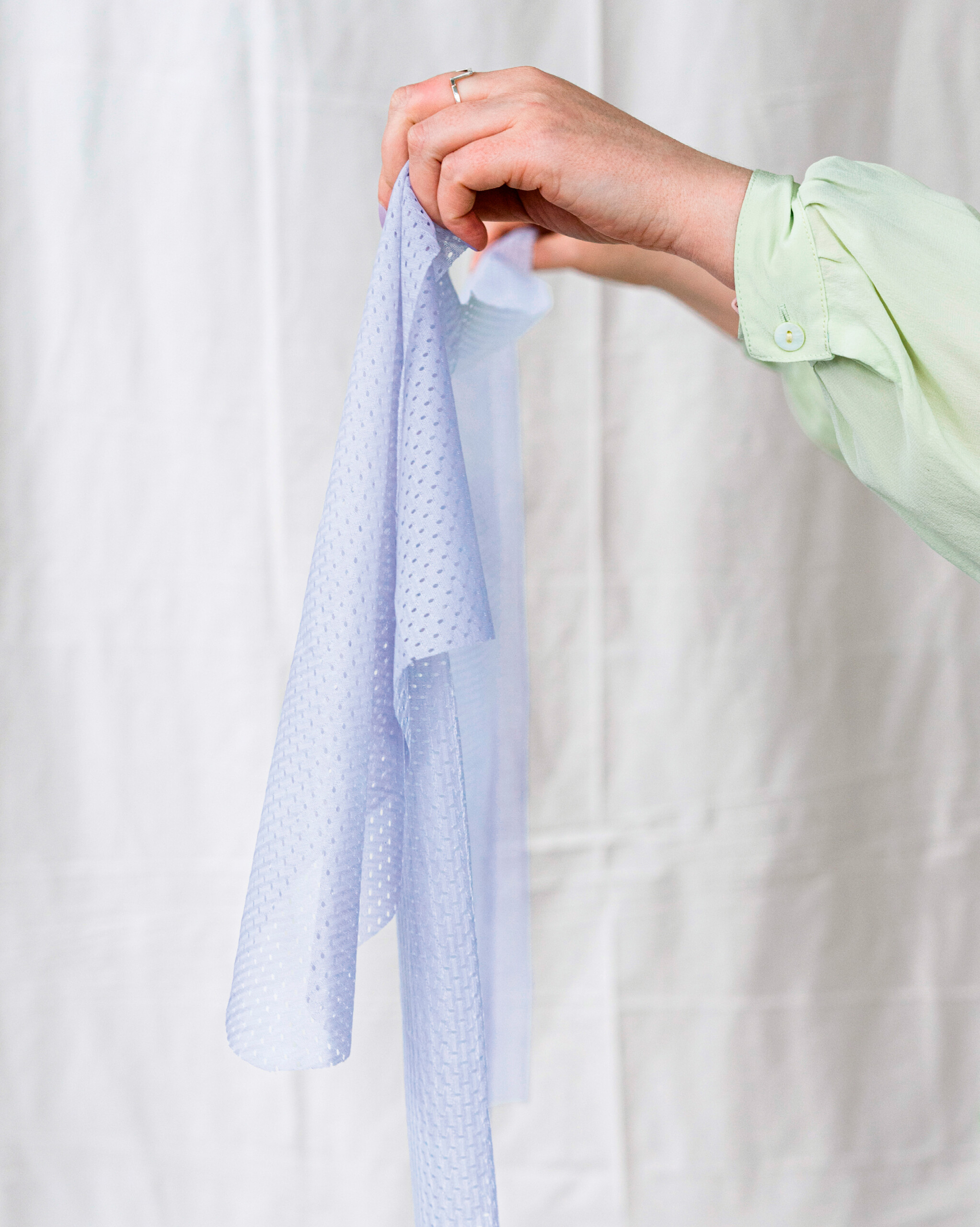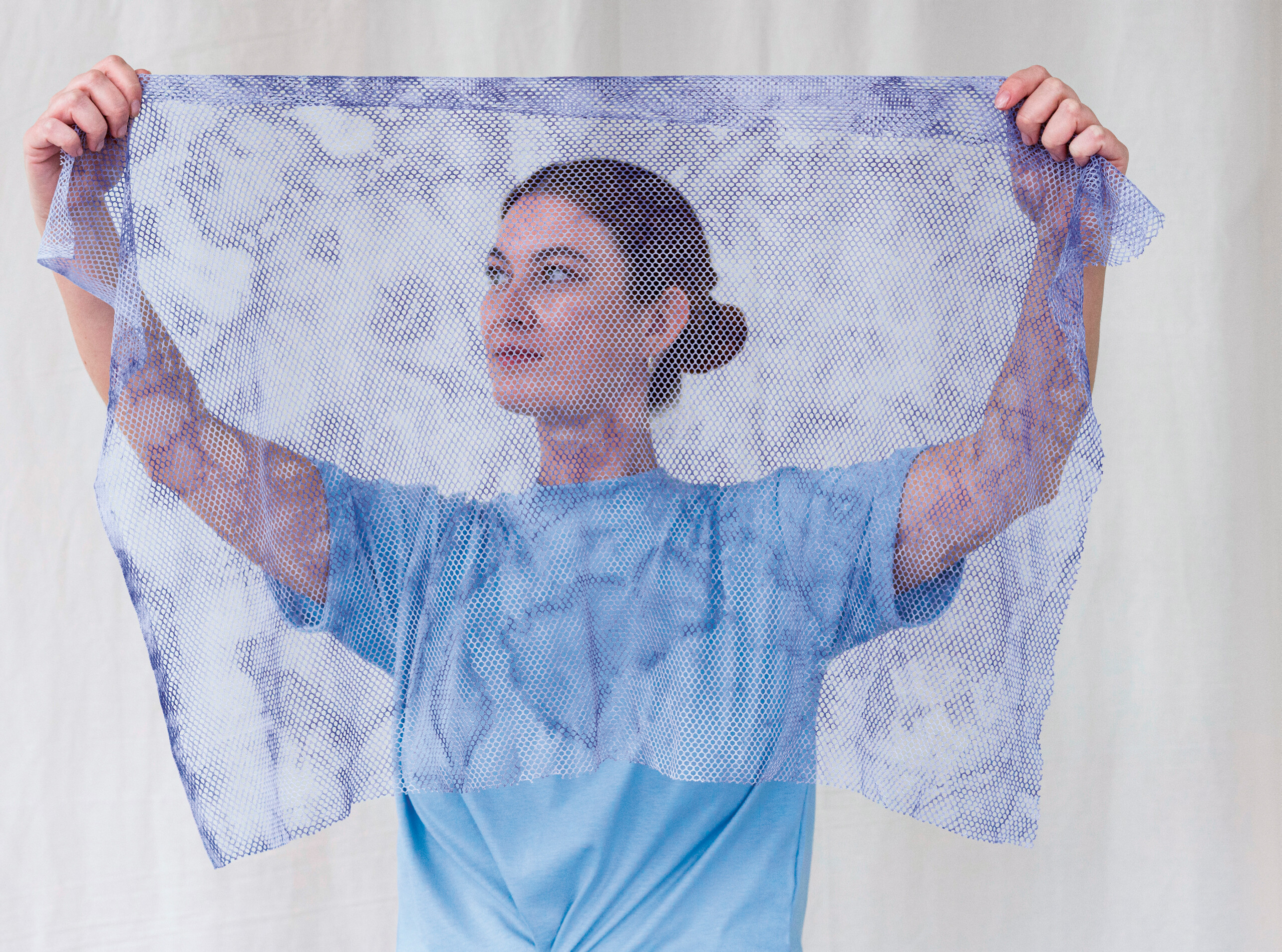Fashion TO DYE FOR

Laura
LUCHTMAN
Ilfa
SIEBENHAAR
Bacteria-based textile dyeing is revolutionising fashion. The method cuts water use by up to 90 per cent and no longer involves the use of chemicals. Rotterdam designers Laura Luchtman and Ilfa Siebenhaar are part of a worldwide movement towards sustainable clothing, which is bringing forth a completely new aesthetic.

I must confess that using bacteria to dye textiles sounds odd, unconventional or even revolutionary. Could you please explain what exactly it is that you do?
L
L
It’s as you said: basically, we dye textiles with pigment-producing bacteria. It's a search for a new and natural way to dye textiles, a more sustainable way, but also a search for a new natural aesthetic. Because on the one hand, we let materials grow on the fabric; we actually cultivate them on the textile itself. When they start out, they’re colourless. But during the three or four days they spend growing, they start producing this pigment, and then they spread all over the fabric, tracing their growth patterns in visible colour.
-
-
-
-
How are the microbes fed? Do you add nutrients?
L
L
The bacteria need liquid with some nutrients, or an agar plate with nutrients in it. That’s the only food they need. But they also need oxygen and sterile environments. They are in their own protected environment at room temperature, which is why they consume less energy.
I
S
We wait for about four days, then we see organic patterns growing …
-
-
-
-
I imagine it as islands evolving into continents—is that right?
I
S
Yes, you could describe it as something like that. Right! The islands grow and multiply, and then after a while the bacteria leave stains on the textile. That’s how we grow the pattern.
-
-
-
-
What about the colours?
I
S
We actually use white textiles and work with different strains of bacteria. Each type produces one colour; one type produces a saturated purple pigment, another produces a red pigment and a third produces a yellow pigment. We prefer the purple one because it’s easier to work with, and also the colour stays in the longest. You could mix bacteria—and thus colours—endlessly …
-
-
-
-
This suddenly starts to remind me of art, highly individual pieces you can wear …
I
S
Yes, it’s very special because you can never predict the result. It’s a unique form of dyeing because there is always a different outcome.
-
-
-
-
You said bacteria don’t need vast amounts of land, water, time and pesticides. Could you provide some figures?
L
L
It depends on the weight of the fabric itself, normally five and a half litres of water are used for a T-shirt. For the same textile item, we don’t even use half a litre.
-
-
-
-
So you save up to 90 percent of the water?
I
S
Exactly.
-
-
-
-
Looking at the colourful mural in your office, I wonder, could you use your colours on the wall as well?
I
S
Yes, this could be possible.
L
L
I think so, too. We’ve been thinking of wallpapers—especially because they come in pastel colours. Dark colours are always more difficult to achieve. For instance, if you dye clothes black using natural products, they would actually have a blue layer, a red layer and a brown layer all on top of each other to create the black colour, but pastels only need one bacteria strain. We’ve already got purple and orange.
-
-
-
-
And what about different kinds of materials?
I
S
The funny thing with these natural dyes is that they will attach to both synthetic and natural surfaces. Natural dye will normally attach to a natural surface only—like cotton or silk. But we’ve discovered that bacteria dyes also attach to synthetics. This is especially interesting for recycling processes, where the yarns or filaments are already mixed and cannot be separated cleanly.

Living
COLOUR
Fashion is a dirty business, not only for the workers in the sweatshops. Above all, fashion consumes a lot of water during the dyeing process. Rotterdam designers Laura Luchtman and Ilfa Siebenhaar plan to change this. They dye with special bacteria—and their range of colours is constantly expanding. Could this be the fashion revolution we have all been waiting for?
Please select an offer and read the Complete Article Issue No 10 Collection Issues No 7, 8, 10 Subscriptions
Already Customer? Please login.
